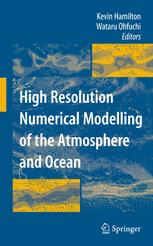

Most ebook files are in PDF format, so you can easily read them using various software such as Foxit Reader or directly on the Google Chrome browser.
Some ebook files are released by publishers in other formats such as .awz, .mobi, .epub, .fb2, etc. You may need to install specific software to read these formats on mobile/PC, such as Calibre.
Please read the tutorial at this link: https://ebookbell.com/faq
We offer FREE conversion to the popular formats you request; however, this may take some time. Therefore, right after payment, please email us, and we will try to provide the service as quickly as possible.
For some exceptional file formats or broken links (if any), please refrain from opening any disputes. Instead, email us first, and we will try to assist within a maximum of 6 hours.
EbookBell Team

4.3
48 reviewsAll numerical simulations of atmospheric and oceanic phenomena are limited by the finite spatial resolution, generally requiring a parameterization of effects of motions on unresolved scales on those explicitly resolved. A goal of numerical modelers has been to resolve as many scales of the actual circulation as practically possible.
With the recent advent of a new generation of high-performance computing systems such as the Earth Simulator, some notable thresholds in terms of model resolution have been approached or, in some cases, surpassed. For example, recently the first long integrations with genuinely eddy-permitting global ocean models have been reported. In atmospheric studies, decadal integrations with global models with effective horizontal resolution of about 20 km have now become possible, and shorter integrations of global models that explicitly resolve scales approaching those of individual convective elements have now been reported. These developments in global models have been paralleled by efforts to apply increasingly fine resolution regional atmospheric models for both climate and short-range forecasting problems.
High Resolution Numerical Modelling of the Atmosphere and Ocean includes 15 individual papers that highlight the emerging research in atmospheric and oceanic science that has been made possible by exploiting newly available computational resources. Results from regional atmospheric, global atmospheric, global ocean, and global coupled ocean-atmosphere models are discussed in the various contributions.
Wataru Ohfuchi is Senior Scientist and Leader of the Atmosphere and Ocean Simulation Research Group at the Earth Simulator Center of the Japan Agency for Marine-Earth Science and Technology.
Kevin Hamilton is Professor of Meteorology and Leader of the Environmental Change Research Team at the International Pacific Research Center of the University of Hawaii Manoa.